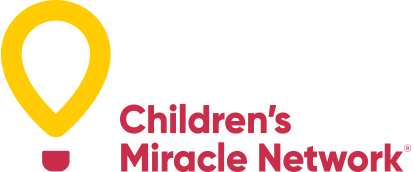These children are the ambassadors for our cause, and spend their year advocating for the support of children’s hospitals across Canada.
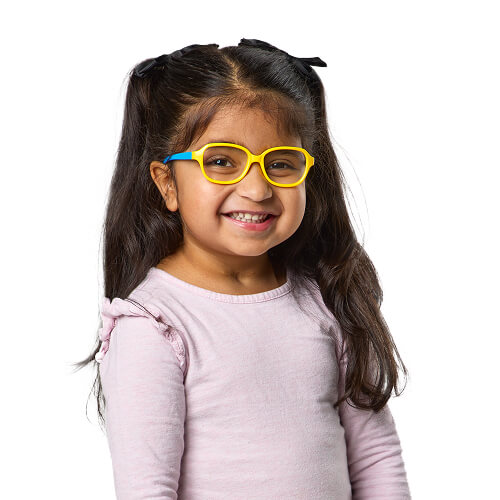
Ely
Alberta Children's Hospital Foundation
Ely loves to sing and dance, but a mass in her nasal cavity once made it difficult for her to breathe. At just 29 days old, she needed a tracheostomy. Thanks to the donor-supported KidSIM program, a world leader in pediatric simulation, her parents gained the skills to care for her at home while she grew strong for surgery. Today, Ely is thriving.
More about Ely

Ely
Alberta Children's Hospital Foundation
Ely loves to sing and dance, but a mass in her nasal cavity once made it difficult for her to breathe. At just 29 days old, she needed a tracheostomy. Thanks to the donor-supported KidSIM program, a world leader in pediatric simulation, her parents gained the skills to care for her at home while she grew strong for surgery. Today, Ely is thriving.
Donate Now (opens in a new window)Ely loves to sing and dance. It’s hard to believe there was a time when her parents couldn’t hear her laugh. Born with a mass that blocked her nasal cavity, Ely struggled to breathe. At just 29 days old, she needed a tracheostomy at the Alberta Children’s Hospital to help her breathe until she grew stronger for surgery. Thanks to the donor-funded, world-class KidSIM Pediatric Simulation Program, her parents could receive specialized training on how to care for her at home.
“The hardest part of your child having a trach is that it takes their voice away,” says her mom, Aliya. “Her cry was silent, and we never heard her laugh.” Ely had two operations to remove the mass with the help of community-funded technology. Her tracheostomy was removed at 18 months old. “The first time we heard her laugh, it was the most beautiful sound,” says her mom.
Back To All Children

Funds In Action
Thanks to your support of the Alberta Children’s Hospital Foundation, kids like Ely can get the best treatment and care possible.
Donate Now (opens in a new window)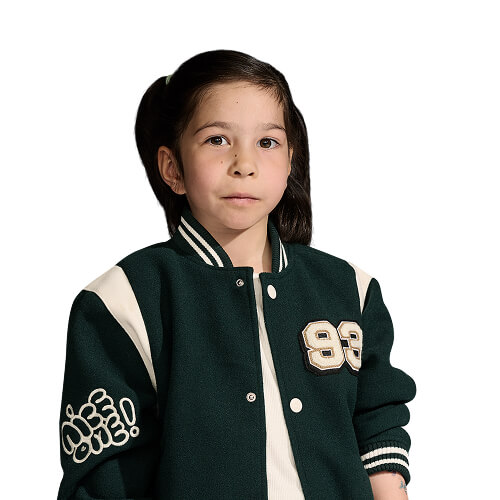
Lola
BC Children's Hospital Foundation
Lola loves Taekwondo and all things Disney. At four months old, she was diagnosed with epilepsy. The team at BC Children’s Hospital performed life-changing surgery on Lola, and after weeks of intensive rehabilitation, she re-learned how to walk and speak clearly. She grows stronger each day and loves swimming and playing with friends.
More about Lola

Lola
BC Children's Hospital Foundation
Lola loves Taekwondo and all things Disney. At four months old, she was diagnosed with epilepsy. The team at BC Children’s Hospital performed life-changing surgery on Lola, and after weeks of intensive rehabilitation, she re-learned how to walk and speak clearly. She grows stronger each day and loves swimming and playing with friends.
Donate Now (opens in a new window)Lola is a vibrant child who loves all things Disney. Diagnosed with epilepsy at four months old, she endured daily seizures for years. At age four, she underwent a life-changing functional hemispherectomy at BC Children’s Hospital to disconnect the affected side of her brain.
The complex surgery required a lengthy recovery, but through the donor-funded Child Life program at BC Children’s Hospital, she pushed through emotional, physical and social hurdles with a certified Child Life specialist by her side. After weeks of rehabilitation, Lola re-learned how to walk and adapt post-surgery. Lola is now seizure-free and enjoys performing and dancing.
Back To All Children

Funds In Action
Thanks to your support of the BC Children’s Hospital Foundation, kids like Lola can get the best treatment and care possible.
Donate Now (opens in a new window)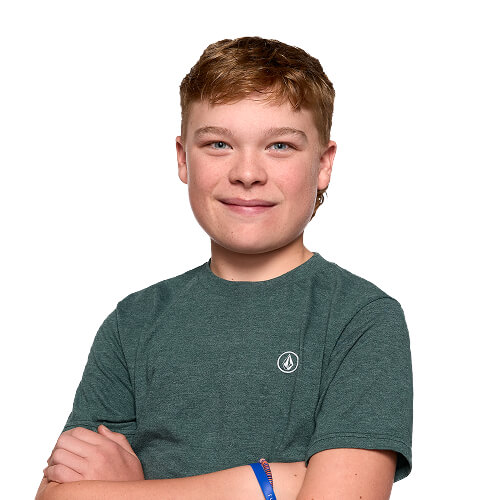
Ryder
Stollery Children's Hospital Foundation
Ryder loves hockey and the Edmonton Oilers, but his journey began with a fight for his life. Born with a life-threatening mass in his stomach, he was rushed to the Stollery Children’s Hospital. Thanks to donor-funded pediatric ultrasound technology and expert care, Ryder fully recovered and now thrives as a healthy teen.
More about Ryder

Ryder
Stollery Children's Hospital Foundation
Ryder loves hockey and the Edmonton Oilers, but his journey began with a fight for his life. Born with a life-threatening mass in his stomach, he was rushed to the Stollery Children’s Hospital. Thanks to donor-funded pediatric ultrasound technology and expert care, Ryder fully recovered and now thrives as a healthy teen.
Donate Now (opens in a new window)Ryder loves playing hockey and the Edmonton Oilers, but his journey began with a fight for his life. At just 10 days old, Ryder was rushed to the Stollery Children’s Hospital, where he had emergency surgery to remove a second stomach that was disrupting normal body functions. Needing to heal, Ryder was placed in a medically induced coma for a week, followed by several weeks in the NICU. Thanks to generous donors, Ryder’s team had access to advanced pediatric ultrasound technology, which played a crucial role in diagnosing and managing his condition, leading to his full recovery.
Back To All Children

Funds In Action
Thanks to your support of the Stollery Children’s Hospital Foundation, kids like Ryder can get the best treatment and care possible.
Donate Now (opens in a new window)
Eluin (Lu)
CHEO Foundation
Lu’s mental health challenges once overwhelmed their life, but thanks to CHEO’s donor-funded 1Call1Click program as well as the care provided by the CHEO mental health team, they received therapy and vital coping tools. Today, Lu is thriving—channeling their passion into reading, playing ringette and advocating for families living with mental health challenges.
More about Eluin (Lu)

Eluin (Lu)
CHEO Foundation
Lu’s mental health challenges once overwhelmed their life, but thanks to CHEO’s donor-funded 1Call1Click program as well as the care provided by the CHEO mental health team, they received therapy and vital coping tools. Today, Lu is thriving—channeling their passion into reading, playing ringette and advocating for families living with mental health challenges.
Donate Now (opens in a new window)Eluin, known as “Lu,” loves to read and play ringette. At a young age, they began experiencing anxiety and sensory challenges, spiralling into a mental health crisis after a stressful relocation from Norway to Canada, school bullying, and losing their beloved cat. Lu felt overwhelmed, couldn’t sleep and lost hope. Through a donor-funded 24-hour Emergency department youth counsellor and 1Call1Click.ca program, Lu and their family were connected to vital mental health resources. Lu also participated in CHEO’s 12-week Dialectical Behavioural Therapy (DBT) program for tweens, teens and their families.
Lu is now flourishing, thanks to a toolbox of mental health coping strategies, personalized medication, and support. They love books and animals and have a passion for theatre and arts. Lu is not only healing but is determined to empower other families by channeling their energy into social justice and activism. “It’s so important to make sure parents and kids who are struggling realize they’re not alone,” says Lu.
Back To All Children

Funds In Action
Thanks to your support of the CHEO Foundation , kids like Eluin (Lu) can get the best treatment and care possible.
Donate Now (opens in a new window)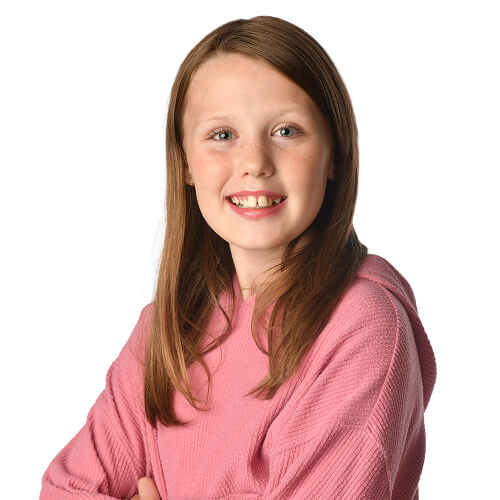
Lauren
Children's Health Foundation
Lauren, a creative girl who loves animals, was diagnosed with leukemia at age 5. The compassionate team at Children’s Hospital London Health Sciences Centre provided her with exceptional oncology care and eased her fears through therapeutic coping techniques. Over two years, Lauren earned bravery beads for every procedure, crafting a necklace that is now as tall as she is. Now cancer-free, Lauren dreams of becoming a veterinarian.
More about Lauren

Lauren
Children's Health Foundation
Lauren, a creative girl who loves animals, was diagnosed with leukemia at age 5. The compassionate team at Children’s Hospital London Health Sciences Centre provided her with exceptional oncology care and eased her fears through therapeutic coping techniques. Over two years, Lauren earned bravery beads for every procedure, crafting a necklace that is now as tall as she is. Now cancer-free, Lauren dreams of becoming a veterinarian.
Donate Now (opens in a new window)Lauren, who loves to laugh and dreams of becoming a veterinarian, had her world turned upside down at age five when unexplained exhaustion and bruising led to a devastating leukemia diagnosis. Within 24 hours, Lauren was rushed to Children’s Hospital, London Health Sciences Centre.
Her dad describes feeling like his legs had been kicked out from under him as a grueling journey of treatments, needle pokes, and chemotherapy suddenly consumed Lauren’s life.
Thanks to donor support, Lauren received exceptional oncology care and compassionate support at Children’s Hospital. Child Life and Therapeutic Clown programs helped her conquer her fears, while pediatric aides introduced creative activities to make her treatments more manageable. Over two years, Lauren earned bravery beads for every procedure, crafting a necklace that is now as tall as she is.
Now cancer-free, Lauren loves spending time with her family and their dog. She proudly wears her bravery bead necklace as a symbol of her courage.
Back To All Children

Funds In Action
Thanks to your support of the Children’s Health Foundation, kids like Lauren can get the best treatment and care possible.
Donate Now (opens in a new window)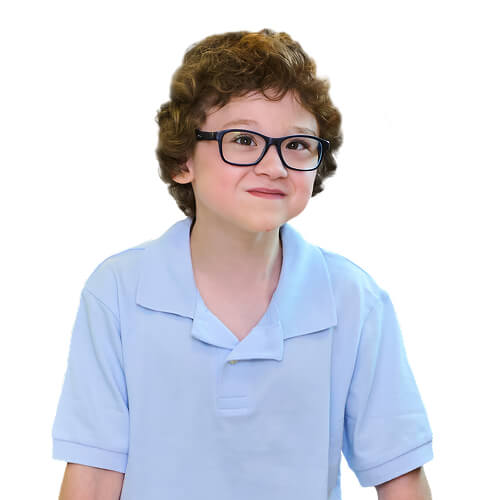
Jack
Children's Hospital Foundation of Manitoba
Jack, born at 26 weeks, underwent seven neurosurgeries as an infant to treat fluid build-up in his brain. This condition led to spastic diplegia cerebral palsy, which affects his motor skills. Thanks to donor-supported surgical equipment, research, and ongoing care at Manitoba’s only children’s hospital, Jack thrives. He’s a happy child who loves flying kites and fishing.
More about Jack

Jack
Children's Hospital Foundation of Manitoba
Jack, born at 26 weeks, underwent seven neurosurgeries as an infant to treat fluid build-up in his brain. This condition led to spastic diplegia cerebral palsy, which affects his motor skills. Thanks to donor-supported surgical equipment, research, and ongoing care at Manitoba’s only children’s hospital, Jack thrives. He’s a happy child who loves flying kites and fishing.
Donate Now (opens in a new window)Jack is a bright and determined child who loves collecting flags, flying kites, and fishing. Born at just 26 weeks alongside his twin brother, Jori, Jack faced heartbreaking challenges from the start. Tragically, Jori passed away after six days, and Jack was diagnosed with hydrocephalus, a dangerous buildup of fluid in his brain. In his first year, Jack underwent seven lifesaving neurosurgeries at HSC Children’s Hospital in Manitoba.
As a result of his condition, Jack now lives with spastic diplegia cerebral palsy, requiring mobility aids like walkers and canes. Despite these challenges, Jack’s resilience shines, and his favourite phrase is, “I can do it!”
Thanks to donor support, Jack had access to advanced surgical tools, groundbreaking research, and ongoing care at Manitoba’s only children’s hospital. His parents, Samantha and Jason, are deeply grateful for the support that saved Jack’s life and helps him thrive today.
Back To All Children

Funds In Action
Thanks to your support of the Children’s Hospital Foundation of Manitoba, kids like Jack can get the best treatment and care possible.
Donate Now (opens in a new window)The challenges the Champions have faced in such early stages of life vary from birth defects and rare diseases to emergencies and chronic syndromes, which for some, requires on-going treatment.
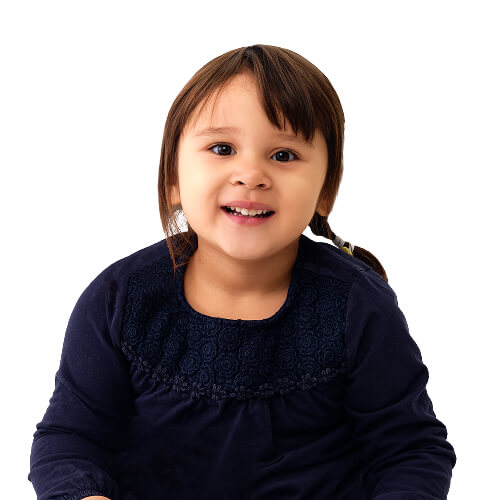
Mey-Lin
Enfant Soleil
Mey-Lin, a lively child with a love for unicorns, faced dangerously low blood sugar as a newborn due to Beckwith-Wiedemann syndrome. Thanks to life-changing monthly injections and advances in feeding technology, she now carries a feeding pump in her backpack that allows her to run and play like other kids.
More about Mey-Lin

Mey-Lin
Enfant Soleil
Mey-Lin, a lively child with a love for unicorns, faced dangerously low blood sugar as a newborn due to Beckwith-Wiedemann syndrome. Thanks to life-changing monthly injections and advances in feeding technology, she now carries a feeding pump in her backpack that allows her to run and play like other kids.
Donate Now (opens in a new window)Mey-Lin is an outgoing child who adores unicorns and playing dress-up. At just a few months old, she was diagnosed with Beckwith-Wiedemann syndrome, a rare condition causing excessive insulin production, dangerously low blood sugar, and an increased risk of childhood cancer. Without immediate intervention, her condition risked damaging her developing brain.
As a newborn, Mey-Lin spent months at Montreal Children’s Hospital, where her care team stabilized her blood sugar using IVs and feeding tubes. When standard treatments failed, a specialized injection became life changing. Now, she carries a feeding pump in a small backpack, which lets her run, jump, and play like other kids.
Thanks to donor support, Mey-Lin has access to lifesaving feeding equipment and exceptional care, including monthly injections to manage her blood sugar, and advanced medical imaging and oncology check-ups to monitor for potential tumours. Despite these challenges, Mey-Lin spreads joy wherever she goes, her little backpack a constant companion and symbol of her resilience.
Back To All Children

Funds In Action
Thanks to your support of the Enfant Soleil, kids like Mey-Lin can get the best treatment and care possible.
Donate Now (opens in a new window)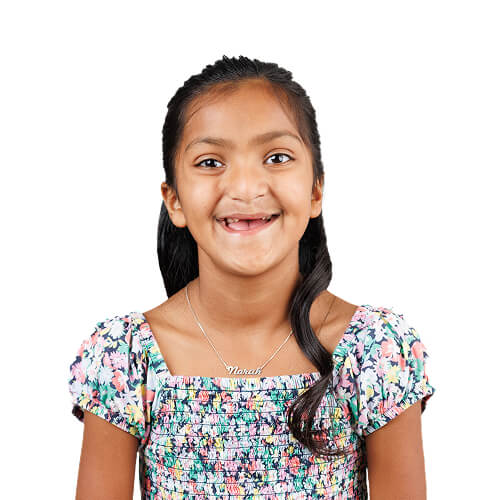
Norah
IWK Foundation
Norah is a vibrant child with a passion for dance. Born with a bilateral cleft lip and palate, she faced speech and hearing challenges. After multiple surgeries and music therapy at the IWK—where her mother had life-saving surgery as a baby—Norah is thriving.
More about Norah

Norah
IWK Foundation
Norah is a vibrant child with a passion for dance. Born with a bilateral cleft lip and palate, she faced speech and hearing challenges. After multiple surgeries and music therapy at the IWK—where her mother had life-saving surgery as a baby—Norah is thriving.
Donate Now (opens in a new window)When Norah was three years old, she was adopted from an orphanage in India. Her parents, Marie and Erik, brought her home to Charter Settlement, NB knowing the IWK would become part of their lives.
Norah was born with a bilateral cleft lip and palate, a common birth defect where splits occur in the upper lip and the roof of the mouth that require surgical repair. She also has some challenges with her hearing and speech.
While in India, Norah received surgery to help repair her bilateral cleft palate, but she would require additional surgery. During her initial visits to the IWK, Norah would appear terrified and cry. It became clear she had a deep fear of hospitals.
“It’s very difficult to provide medical care for a child who is in so much distress, but the IWK team was amazing!” says Norah’s mom, Marie. “They did everything they could to help her feel comfortable. They even let her take a breathing mask home to practice wearing it before her next surgery.”
During her surgery, Norah did excellently and has since been given the affectionate name of ‘Big Brave Norah’—a name that fits her perfectly! The IWK team worked gently to build Norah’s trust, easing the anxiety from past hospital experiences. During her first surgery, Marie was allowed to carry her to the operating room, creating a powerful bond.
Thanks to expert care and donor support, Norah is thriving. Donor dollars funded Therapeutic Clown and Music Therapy, which helped with her recovery, and provided specialized equipment in the operating room and dentistry clinic.
Back To All Children

Funds In Action
Thanks to your support of the IWK Foundation, kids like Norah can get the best treatment and care possible.
Donate Now (opens in a new window)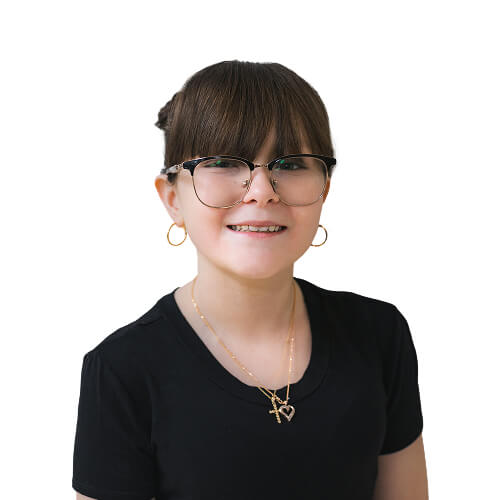
Aaliyah
MacKids
Aaliyah’s leukemia diagnosis at age 10 was met with fear, but McMaster Children’s Hospital provided hope. From a newly renovated Oncology Unit to Child Life specialists and cutting-edge research, donor-funded care made her treatment and recovery possible. Aaliyah is now cancer-free and back to doing what she loves: cooking, playing volleyball, and spending time with loved ones.
More about Aaliyah

Aaliyah
MacKids
Aaliyah’s leukemia diagnosis at age 10 was met with fear, but McMaster Children’s Hospital provided hope. From a newly renovated Oncology Unit to Child Life specialists and cutting-edge research, donor-funded care made her treatment and recovery possible. Aaliyah is now cancer-free and back to doing what she loves: cooking, playing volleyball, and spending time with loved ones.
Donate Now (opens in a new window)Aaliyah is a creative child who loves her family. After experiencing severe leg pain at age 10, she was diagnosed with acute lymphoblastic leukemia (ALL) at McMaster Children’s Hospital. Over the next two years, Aaliyah underwent chemotherapy, countless tests, and regular hospital visits.
Thanks to donations in support of MacKids, Aaliyah received specialized care in a newly renovated, child-friendly Oncology Unit designed to prioritize children’s physical and emotional well-being. Donor-funded toys, games, and activities brought joy during her treatment, while trained Child Life Specialists offered emotional support. Cutting-edge research into pediatric cancers and treatments—made possible by donor generosity—were also critical to her recovery.
After completing her treatment, Aaliyah and her family marked the occasion with a traditional Indigenous ceremony in Makayla’s Room, a dedicated Indigenous healing space in the hospital open to all families.
Today, Aaliyah is cancer-free and back to doing what she loves: cooking, playing volleyball, and spending time with loved ones.
Back To All Children

Funds In Action
Thanks to your support of the MacKids, kids like Aaliyah can get the best treatment and care possible.
Donate Now (opens in a new window)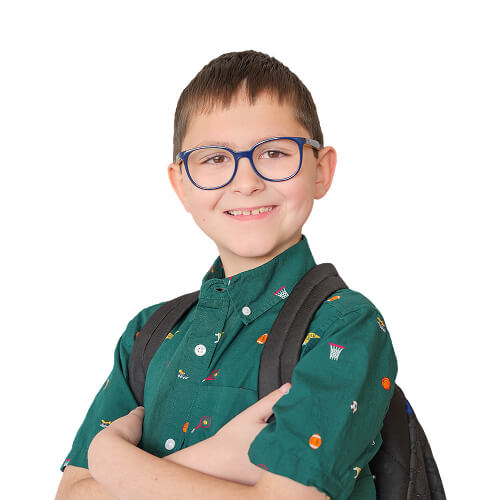
Blaze
Jim Pattison Children's Hospital Foundation
Blaze loves adventure, though his journey has included overcoming several physical challenges. After a bike accident, he was air-transported by Saskatchewan’s Pediatric Critical Care Team to receive specialized care at Jim Pattison Children’s Hospital. Despite ongoing challenges, Blaze enjoys swimming and quadding with his dad.
More about Blaze

Blaze
Jim Pattison Children's Hospital Foundation
Blaze loves adventure, though his journey has included overcoming several physical challenges. After a bike accident, he was air-transported by Saskatchewan’s Pediatric Critical Care Team to receive specialized care at Jim Pattison Children’s Hospital. Despite ongoing challenges, Blaze enjoys swimming and quadding with his dad.
Donate Now (opens in a new window)Blaze loves adventure, though his journey has involved overcoming several physical challenges, including surgeries for bilateral club feet and a tethered spine. After a severe bike accident in 2022 left him with a broken femur and humerus, Blaze was air-transported by Saskatchewan’s Pediatric Critical Care Team to receive specialized care at Jim Pattison Children’s Hospital.
“Without our provincial children’s hospital, I am not sure where Blaze would have been sent. He got the specialized care he needed close to home,” says his mom. Despite ongoing treatment, Blaze enjoys swimming and quadding with his dad.
Back To All Children

Funds In Action
Thanks to your support of the Jim Pattison Children’s Hospital Foundation, kids like Blaze can get the best treatment and care possible.
Donate Now (opens in a new window)Their stories remind us of the importance of children’s health, and why donations are so pivotal to providing comfort, treatment and hope to millions of Canadian kids.
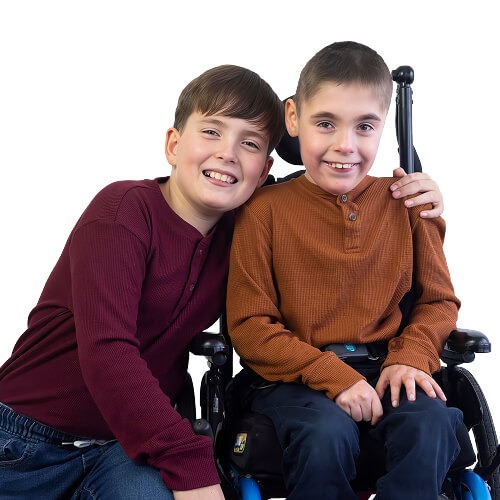
Zander and Lyndon
Janeway Children's Hospital Foundation
Zander and Lyndon love school and learning. Born at 25 weeks, they faced major health challenges and lost their triplet brother, Billy. Zander struggled with a heart condition. Lyndon battled seizures caused by cerebral palsy and epilepsy. Donor-funded care at the Janeway Children’s Hospital saved their lives, providing expert care and therapy services. Today, both boys thrive, bringing joy to their family.
More about Zander and Lyndon

Zander and Lyndon
Janeway Children's Hospital Foundation
Zander and Lyndon love school and learning. Born at 25 weeks, they faced major health challenges and lost their triplet brother, Billy. Zander struggled with a heart condition. Lyndon battled seizures caused by cerebral palsy and epilepsy. Donor-funded care at the Janeway Children’s Hospital saved their lives, providing expert care and therapy services. Today, both boys thrive, bringing joy to their family.
Donate Now (opens in a new window)Zander and his brother Lyndon share a special bond and love for school. Born prematurely, the boys faced immense health challenges. Tragically, their triplet brother, Billy, passed away shortly after birth. Zander had breathing issues, and a heart condition called PDA. Lyndon spent 209 days in the NICU battling infections, blood clots, and fractures, later being diagnosed with cerebral palsy and epilepsy.
Thanks to donor-funded care at the Janeway Children’s Hospital, Zander and Lyndon received lifesaving treatment. Expert care from the neurology, cardiology, physiotherapy, occupational therapy, music therapy and ophthalmology teams supported their remarkable progress. Today, both boys are happy and thriving. “We owe the lives of our boys to the Janeway,” says their mom.
Back To All Children

Funds In Action
Thanks to your support of the Janeway Children’s Hospital Foundation, kids like Zander and Lyndon can get the best treatment and care possible.
Donate Now (opens in a new window)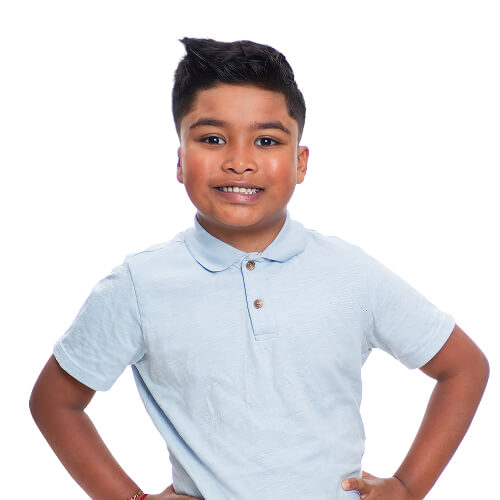
Maxen
SickKids Foundation
Maxen loves to watch movies and excels at karate. Born with a congenital heart defect and esophageal atresia, Maxen underwent life-saving surgeries at SickKids to repair his heart and esophagus. Today, he is a thriving boy who won’t hesitate to tell you that his name means “the greatest.”
More about Maxen

Maxen
SickKids Foundation
Maxen loves to watch movies and excels at karate. Born with a congenital heart defect and esophageal atresia, Maxen underwent life-saving surgeries at SickKids to repair his heart and esophagus. Today, he is a thriving boy who won’t hesitate to tell you that his name means “the greatest.”
Donate Now (opens in a new window)Maxen is known for his charm and will proudly tell you his name means “the greatest.”
Before he was born, doctors discovered a congenital heart defect and complications involving his kidney. Plans were made to rush Maxen through the underground tunnel to SickKids immediately after birth.
At SickKids, Maxen underwent critical esophageal surgery within his first 24 hours of life, heart surgery at just four days old, followed by a successful esophageal repair and two other open-heart surgeries. Maxen’s recovery is remarkable.
“Every day, we go to battle against our child’s diagnosis, but we’ve got the best warriors on our side,” says his mom. Today, Maxen thrives, overcoming every challenge with a smile.
Back To All Children

Funds In Action
Thanks to your support of the SickKids Foundation, kids like Maxen can get the best treatment and care possible.
Donate Now (opens in a new window)